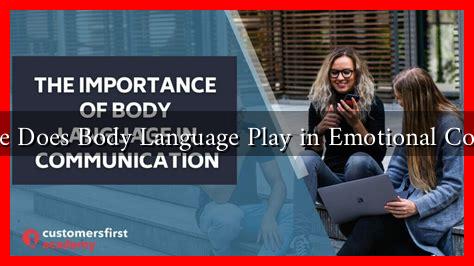-
Table of Contents
What Role Does Body Language Play in Emotional Connection?
Body language is a powerful form of non-verbal communication that significantly influences emotional connections between individuals. It encompasses facial expressions, gestures, posture, and eye contact, all of which convey feelings and intentions often more effectively than words. Understanding the role of body language in emotional connection can enhance interpersonal relationships, improve communication skills, and foster deeper connections.
The Science Behind Body Language
Research indicates that a substantial portion of human communication is non-verbal. According to a study by Albert Mehrabian, 93% of communication is conveyed through body language (55% through facial expressions and body movements, and 38% through tone of voice). This statistic underscores the importance of body language in conveying emotions and establishing connections.
Key Elements of Body Language
Several key elements of body language play a crucial role in emotional connection:
- Facial Expressions: The human face can express a wide range of emotions, from joy to sadness. A genuine smile can create warmth and openness, while a frown may signal discontent or discomfort.
- Eye Contact: Maintaining eye contact can foster trust and intimacy. Conversely, avoiding eye contact may indicate discomfort or disinterest.
- Posture: Open and relaxed posture can signal receptiveness and confidence, while closed or tense posture may suggest defensiveness or anxiety.
- Gestures: Hand movements can emphasize points and convey enthusiasm. However, excessive or erratic gestures may distract from the message.
Building Emotional Connections Through Body Language
Effective use of body language can significantly enhance emotional connections in various contexts, including personal relationships, professional settings, and social interactions. Here are some ways body language contributes to emotional bonding:
- Creating Trust: Consistent and positive body language fosters trust. For instance, a firm handshake and steady eye contact during introductions can create a sense of reliability.
- Enhancing Empathy: Mirroring the body language of others can create a sense of empathy and understanding. This technique, known as “mirroring,” helps individuals feel more connected.
- Expressing Support: Non-verbal cues, such as nodding or leaning in during conversations, can signal support and attentiveness, making the speaker feel valued.
Case Studies and Real-Life Examples
Numerous studies and real-life examples illustrate the impact of body language on emotional connections:
- A study published in the journal “Emotion” found that couples who engaged in positive body language during discussions reported higher levels of relationship satisfaction.
- In a workplace setting, a survey by the Forbes Human Resources Council revealed that employees felt more connected to their leaders who exhibited open body language, leading to increased morale and productivity.
Challenges and Misinterpretations
While body language can enhance emotional connections, it can also lead to misunderstandings. Cultural differences play a significant role in how body language is interpreted. For example, while direct eye contact is seen as a sign of confidence in many Western cultures, it may be perceived as disrespectful in some Asian cultures. Being aware of these differences is crucial for effective communication.
Conclusion
Body language is an essential component of emotional connection, influencing how we perceive and relate to one another. By understanding and effectively utilizing body language, individuals can enhance their interpersonal relationships, foster trust, and create deeper emotional bonds. As we navigate our interactions, being mindful of our non-verbal cues can lead to more meaningful connections and improved communication. Ultimately, mastering the art of body language can transform our relationships, both personally and professionally.

